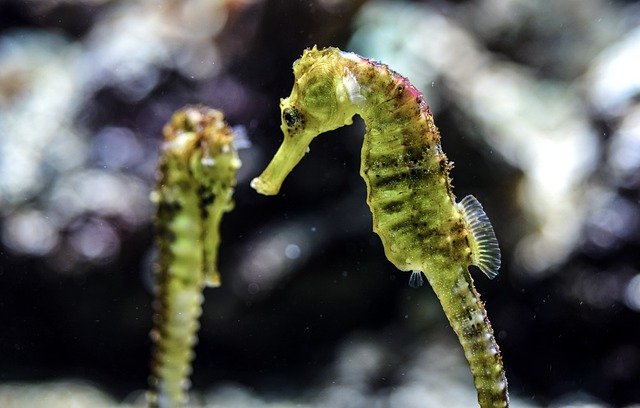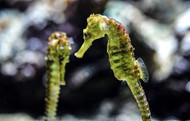Seahorse Facts for the Whole Family
Feb 28th 2022
 Seahorses are some the of ocean's most beloved animals and for good reason! Learn some extraordinary facts about seahorses in this post. Warning: You might never look at seahorse the same way ever again.
Seahorses are some the of ocean's most beloved animals and for good reason! Learn some extraordinary facts about seahorses in this post. Warning: You might never look at seahorse the same way ever again.
Just What is a Seahorse, Anyway?
Seahorses are actually a type of fish. They live in water and breathe through their gills. They also have a swim bladder. Unlike other fish, seahorses don't have caudal fins, but they do have dorsal fins. They propel themselves by using their dorsal fin, which can flutter up to an amazing 35 times per second. Seahorses also possess a prehensile tail.
Where Do Seahorses Live?
Viable habitats for seahorses include tropical and temperate waters all over the world. Seahorses live in a variety of habitats including seagrass beds, coral reefs, and estuarine environments. Seahorses will use their prehensile tails to anchor themselves to seaweed, coral, and other stationary objects in these environments.
What Do Seahorses Eat?
Chew on this! The main staples of a seahorse's diet are small crustaceans such as:
- mysis shrimp
- ghost shrimp
- red shrimp
- brine shrimps
- daphnia
- guppies
Furthermore, an adult seahorse must eat from 30 to 50 times every day just to stay alive. Talk about your "see food" diet.
Seahorse Reproduction
The mating behavior of seahorses is rather unique. Many seahorses remain with the same partner for a whole breeding season... sometimes longer. Staying committed to a single partner makes it possible for male seahorses and female seahorses to engage in multiple reproduction cycles each mating season. This increases the success of regular procreation over time, which essential to the survival of the species.
Each morning, seahorse couples partake in ritual-like dances to greet each other. This process involves an intricate, rhythmic choreography that involves twists and twirls. These daily dances can last as little as a few minutes to many hours. This complex courting dance helps to fortify their romantic bond and helps to keep their reproductive cycles in sync. It also verifies, each day, that both partners are still alive and committed.
One of the most unique aspects of seahorse reproduction is that the male seahorse is the one that becomes impregnated and bears the seahorse offspring. This is quite the anomaly in the animal kingdom.
Are There Different Species of Seahorses?
While we can't ascertain an exact global seahorse population, we currently know of about 47 species of seahorses, which come in a great array colors and sizes. The most commonly recognized species of seahorses include the:
- Short-snouted Seahorse
- Long-snouted Seahorse
- Spiny Seahorse
- Bigbelly Seahorse
- Winged Seahorse
Of known species, the Bigbelly seahorse is the largest. This seahorse is native to New Zealand and Southern Australia, and can grow to about 10 times the size of the smallest seahorse species, which is the Satomi's Pygmy Seahorse.
Satomi's pygmy seahorse is the smallest of all currently known seahorse species. In fact, it can only grow to about 1/2-inch in size. Satomi's pygmy resides near coral walls in Indonesia and northern parts of Borneo.
In Conclusion
Population data for most of the world's more nearly 50 seahorse species is sparse. We do know, however, that global coastal habitat depletion, pollution, and excessive harvesting—seahorses are very popular in traditional Chinese medicine—have made several known species quite vulnerable to extinction.
All that aside, seahorses still remain a quite popular pet choice in cultures all over the world.

